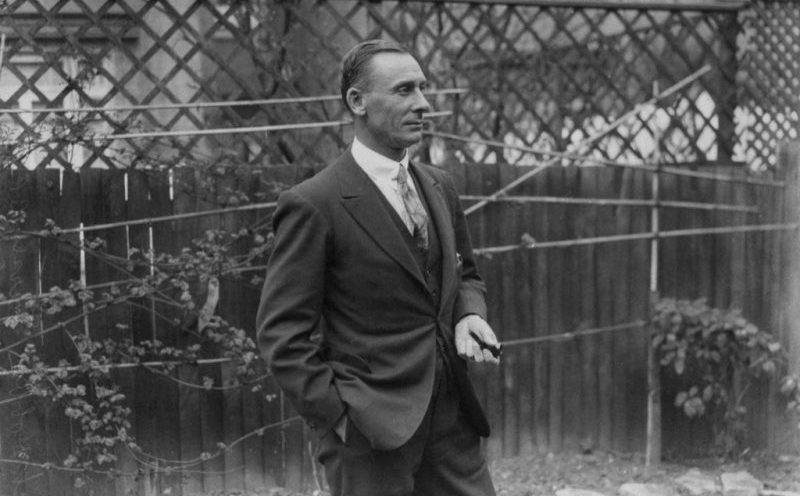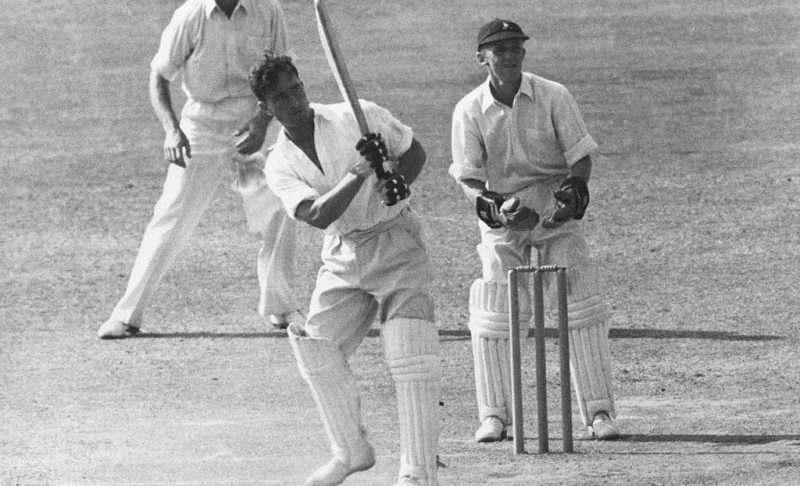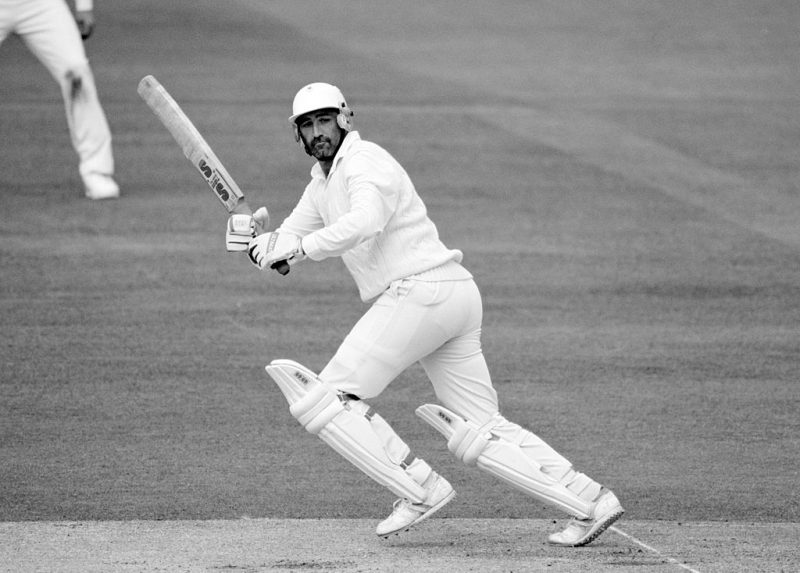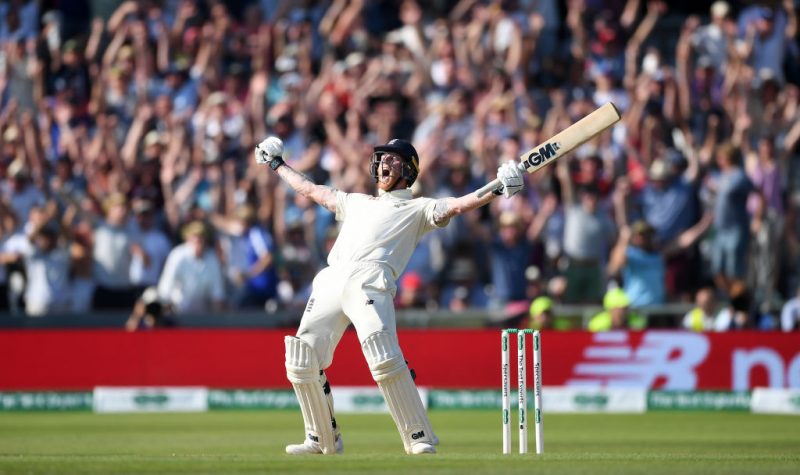English batsmanship: From the Golden Age to now

“I can still bat. You can bat. Anyone can bat. But can you make any runs? That’s the question.”
This line, taken from Graham Gooch’s interview with Jon Hotten which forms the backbone of Wisden Cricket Monthly’s flagship feature this month, could well serve as cricket’s most enduringly mysterious question.
Gooch sees it as acquiring “the knowledge”, and indeed it’s tempting to read the whole unfolding story of English batsmanship as a secret language which only a chosen few can decipher: a tangle of tales and folklore, from which emerges a vast tapestry of overlapping eras, each with their own theories and ways of doing things yet tied to the whole. Via interviews with four of England’s all-time greats and finishing off with an in-depth discussion with the next great pretender, Ollie Pope, we attempt to trace that line.
Simon Wilde, Sunday Times cricket correspondent and the author of England: The Biography, kicks off the feature by looking at why English batting up until the turn of this century was so often marked by pragmatism.
The pull of pragmatism
By Simon Wilde
The history of English batsmanship is a story of pragmatism. England do not as a rule produce wristy manipulators of the ball in the way Asian countries do, or players who hit freely through the line like Australians or West Indians. In their temperate climate, pitches tend to be more pliable, the ball swings more under overcast skies, and if a batsman is to survive he needs a cautious, canny nature, allied with a stubborn refusal to give up. England’s best are traditionally excellent technicians who come into their own when required to grind out runs on treacherous surfaces, or defend their wickets in backs-to-the-wall situations.
There have been brilliant strokemakers of course, swashbucklers and gamblers eager to attack. But English cricket is suspicious of chancers, considering there to be no greater sin than talent-squandering. Some of England’s finest Test openers had all the shots but they learnt to rein them in: Jack Hobbs was a dasher in his young days, so too Len Hutton. When his responsibilities grew, Hutton said of the hook shot: “I once got to the halfway stage, but out of the corner of my eye I could see the local hospital. So I cut it out.” A youthful Geoff Boycott scored a freewheeling 146 in a Gillette Cup final; he never played like that in a Test match. No one for England has scored more Test runs or played a longer innings than Alastair Cook, but his repertoire of shots was sparse.

Jack Hobbs, circa 1925
Joe Root paid little heed to such history when in his first phase as England’s Test captain he sought to build a batting line-up in the image of Eoin Morgan’s ultra-aggressive one-day side. He learnt the hard way that while one-day cricket is about how good a batsman’s attacking shots are, Test cricket is about how good his defence is. Since last summer, Root’s team has put a greater premium on defence.
WG Grace first showed what could be achieved with a strong defence, playing forward or back so solidly that he racked up centuries, double-centuries and triple-centuries when most were happy with fifties. The Sussex pair of Ranjitsinhji and CB Fry took note and spliced onto watertight defences an array of shots so wide that it enabled them to score runs all around the wicket. Both were strong off their legs at a time when such strokes were regarded as too difficult or in some way underhand; Fry wrote that Ranji “made a science of taking liberties”.
Neither Fry nor Ranji played as often for England as they might, or scored as heavily in Tests as they should, but they were not the only amateurs to find big matches against Australia unforgiving. By the 1920s, almost all the heavy lifting in Ashes Tests was being done by hard-headed professionals. Jack Hobbs and Herbert Sutcliffe, as prolific an opening pair as England have had, made shameless use of their pads as a second line of defence, so much so that no sooner had Hobbs retired in 1934 than the lbw law was expanded to allow for batsmen to be out to balls pitching outside off stump as well as those pitching in line with the stumps, provided impact remained in line. Sutcliffe struggled to adjust to the new law and soon followed Hobbs into retirement from Tests. Similarly, Walter Hammond, though he had a cover drive to die for, knew that Test cricket demanded restraint and this was the key to his record haul of 905 runs in Australia in 1928-29, when he batted in what was described as “a quietly determined, self-denying way”. His strike-rate was a meagre 35.90 but thanks to him England won 4-1.
When after the Second World War, England and Australia agreed to standardise playing hours for matches between themselves to 30 hours, whereas previously Tests in Australia were played to a finish and those in England generally spanned three or four days, it played to those with a talent for attrition, setting English cricket on a course that would not change for more than 50 years.
Former amateur players turned chairmen of selectors such as Gubby Allen, Walter Robins and Doug Insole urged England’s players to adopt a brighter style, and Ken Barrington and Geoffrey Boycott were both dropped for scoring too slowly in Tests, but nothing really changed. England’s leaders were instinctively risk-averse. Leonard Hutton, the first professional to be appointed captain, never wholly trusted Denis Compton, whom he regarded as too cavalier. Compton, who played daring sweeps and hooks, delighted in entertaining crowds. Tom Graveney was another who was too freewheeling for his own good; he was rarely sure of his place under Hutton or Peter May.

Denis Compton bats against South Africa at The Oval, August 1947
It is no coincidence that partnerships that have entered English folklore include improbable rearguard actions to save games: Trevor Bailey and Willie Watson against Australia at Lord’s in 1953 and May and Colin Cowdrey denying Sonny Ramadhin at Edgbaston in 1957. That England only won the Ashes in ’53 because of Bailey’s time-wasting later in the series, and May and Cowdrey’s cynical kicking away of Ramadhin’s deliveries outside off stump ultimately led to another revision of the lbw law, was conveniently overlooked.
The Roundhead versus Cavalier debate continued into the 1980s, when Ian Botham and David Gower with their dashing strokeplay helped win successive home Ashes series only to be axed towards the end of the decade as Graham Gooch sought to instil more discipline into a team that had forgotten how to win. Gooch admitted their omission was a deliberate ploy to get away from the “champagne-set image”. When Gower was later left out of a tour of India and Sri Lanka, it caused a public outcry, but Gooch got his way. Gooch’s successor as captain was the archest of blockers, Mike Atherton, whose most famous innings was a 643-minute vigil to draw a Test in Johannesburg.

Graham Gooch hit 8,900 runs across 118 Tests for England
Then came the changes that put English pragmatism under greatest strain. The rise in ODI cricket and the arrival of Twenty20s led to a general synthesising of Test and one-day methods. England’s reluctance to embrace the white-ball formats – they only introduced separate Test and ODI squads on tour in 1997-98 and were late sending players en masse to the IPL – meant this process was delayed, but under Michael Vaughan they played a particularly attacking brand en route to the Ashes win of 2005 when Kevin Pietersen, a South African by birth and upbringing who played Test cricket as though it was a one-day match, was their lodestar. Pietersen continued to be an influential figure in the side that went to No.1 in the Test rankings in 2011 but when that team imploded in Australia a couple of years later he paid the heaviest price, losing his place for good.
Only when Andrew Strauss, as director of England cricket, called for the team to unashamedly embrace the white-ball formats in 2015 was the stigma finally removed from shot-making. Morgan’s ODI team reaped the early rewards. For Root’s Test team, the path has proved bumpier, but we have seen that those players such as Root himself whose defences are good enough can, when the situation is right, switch into “one-day mode” to deadly effect. Even Jos Buttler, who does not really trust his defence in Test cricket, has harnessed his arsenal of one-day shots in the longer format, helping to win a Test in Pallekelle in 2018 with sweeps, reverse-sweeps and scoops.

“Expect the arc of Stokes’ innings to become more common”
The outstanding illustration of what is possible was of course Ben Stokes’s match-winning Ashes century at Headingley last year, an innings for the most part of rock-solid defence that ended in an explosion of one-day hitting. The implausibility of England’s victory may not easily be replicated, but expect the arc of Stokes’ innings to become more common. Indeed, Ollie Pope’s recent century in Port Elizabeth similarly combined orthodox Test match batting with outrageous short-form improvisation. Welcome to the future.
To read the rest of this article, featuring Daniel Norcross in conversation with Geoffrey Boycott, the nervous Nineties as remembered by Michael Atherton and Alec Stewart, a symposium on batting with Graham Gooch and Phil Walker in conversation with Ollie Pope, pick up the magazine here.

